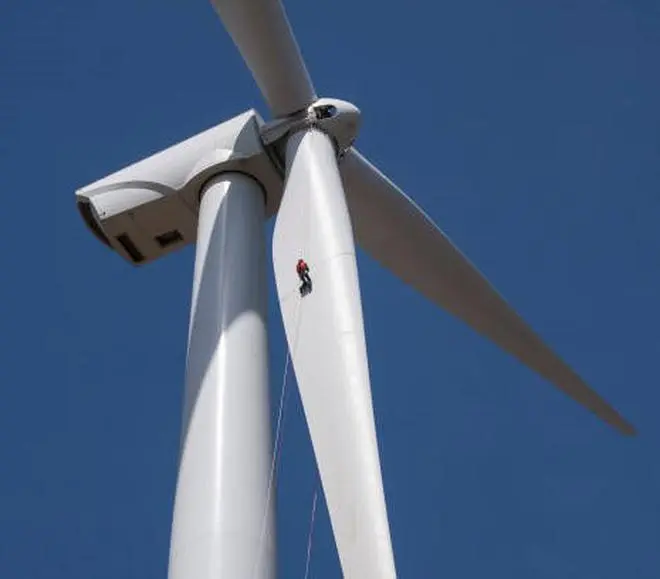Offshore wind turbines harness the energy of ocean winds and turn it into electricity. Several European and some Asian countries have offshore wind farms which supply local, clean, renewable energy.
In order to capture the abundant wind resources offshore turbines can be scaled up in height with blades the length of a football field.

Offshore wind turbine components are transported by ships and barges, reducing some of the logistical challenges that land-based wind components encounter, such as narrow roadways or tunnels.

Electricity produced by offshore wind turbines travels back to land through a series of cable systems that are buried in the sea floor. This electricity is channelled through coastal load centres that prioritize where the electricity should go and distributes it.
Several companies are developing innovative floating offshore platforms for use in deep waters. Three kinds of floating platforms are spar-buoy, tension leg platform, and semi-submersible. About 75% of projects plan to use semi-submersible platforms.

India has a coastline of about 7600 km with good prospects of harnessing offshore wind energy. The government has set a target of 5.0 GW of offshore wind installation by 2022 and 30 GW by 2030.
Offshore wind power offers a plausible alternative to land projects which face challenges due to land constraints. Offshore wind turbines are much larger in size (in range of 5 to 10 MW per turbine) as against 2-3 MW of an onshore wind turbine and cost per MW is also higher. However, higher efficiencies can make up for this constraint.








Comments
Comments have to be in English, and in full sentences. They cannot be abusive or personal. Please abide by our community guidelines for posting your comments.
We have migrated to a new commenting platform. If you are already a registered user of TheHindu Businessline and logged in, you may continue to engage with our articles. If you do not have an account please register and login to post comments. Users can access their older comments by logging into their accounts on Vuukle.